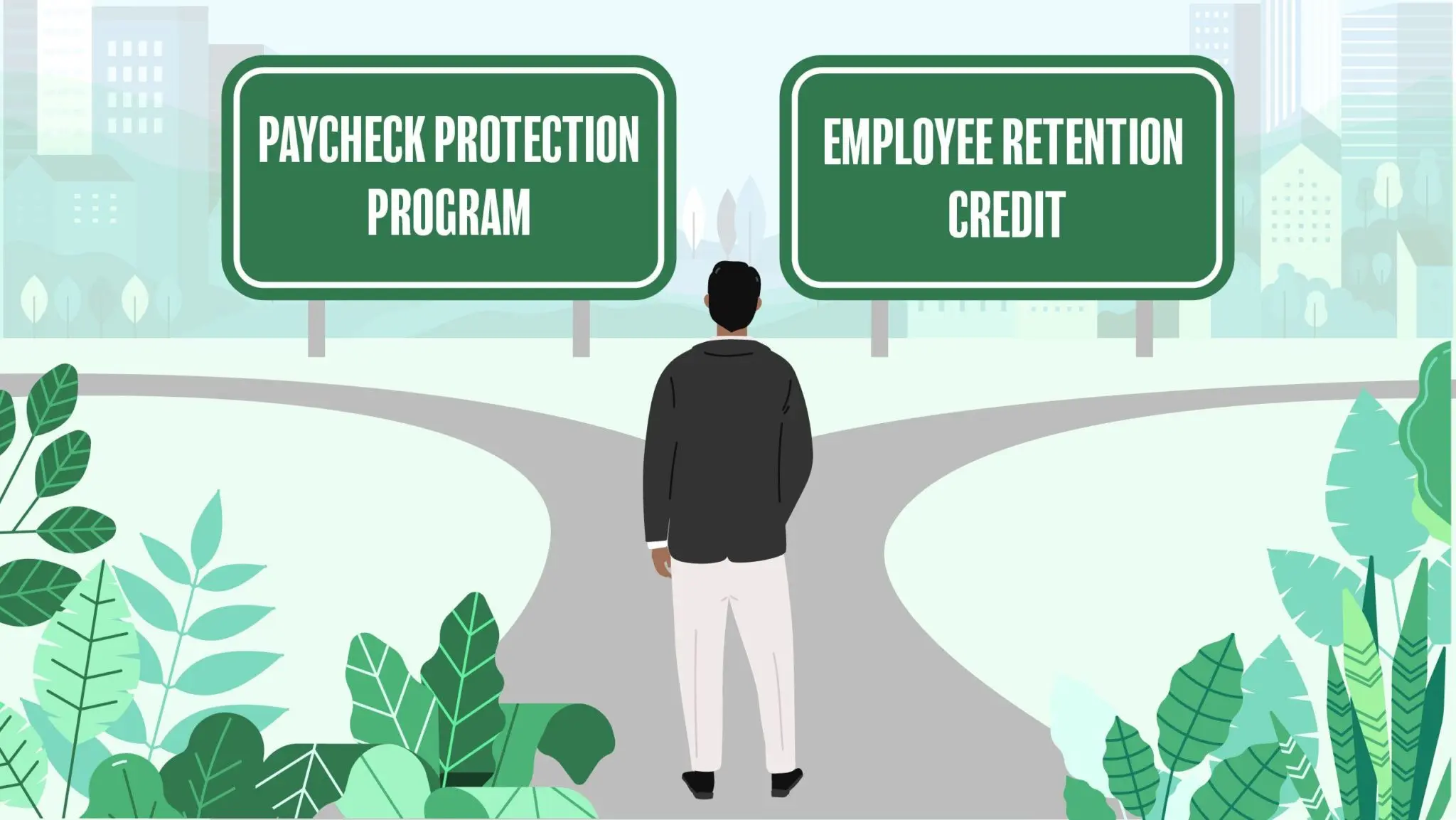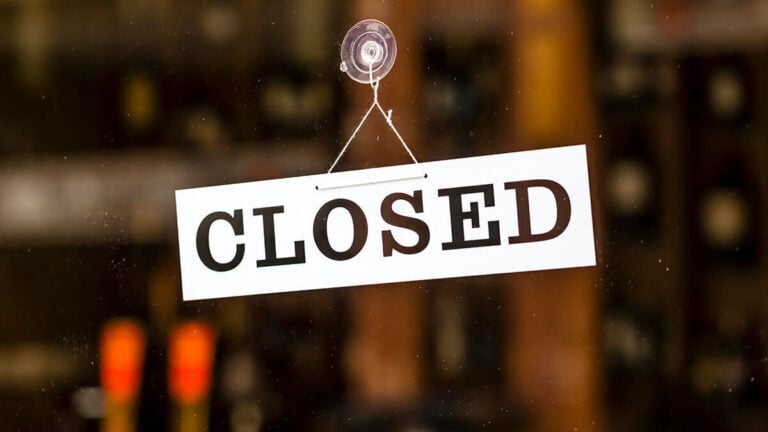So, when it comes to a PPP loan vs. Employee Retention Credit, which should you choose? Thanks to the Consolidated Appropriations Act, you don’t have to choose anymore. Now, you can claim the ERC and take out a PPP loan.
Get the facts about both types of relief measures below.
PPP loan vs. Employee Retention Credit
The Coronavirus Aid, Relief, and Economic Security Act (CARES Act) established both the Paycheck Protection Program and Employee Retention Credit. And, a number of laws since (e.g., Consolidated Appropriations Act) have extended and expanded these measures.
Both relief measures encourage employers to keep employees on their payroll. They essentially provide employers with funds to cover payroll costs. One comes in the form of an SBA-guaranteed loan and the other in the form of a payroll tax credit.
Learn about both below.
What are they?
Paycheck Protection Program: The PPP is a forgivable loan employers can apply for through an approved lender to help cover payroll costs (wages up to $100,000, employee benefits, and state and local taxes). Employers can also use some of the funds (40%) to cover interest on mortgages, rent, utilities, operations expenditures, covered property damage, supplier costs, and worker protection expenditures.
Employee Retention Credit: The credit is a refundable payroll tax credit employers can claim on their federal employment tax return to cover employee wages and qualified health plan expenses associated with those wages.
Am I eligible?
Paycheck Protection Program: All small businesses with 500 or fewer employees and some businesses in certain industries with more than 500 employees can apply for a PPP loan. This includes self-employed individuals, independent contractors, sole proprietorships, nonprofits, veterans organizations, tribal businesses, housing cooperatives, media organizations, and small agricultural cooperatives.
Employee Retention Credit: Employers of any size are eligible for the Employee Retention Credit if they meet the qualifications. But, self-employed individuals cannot claim the credit for their self-employment services or earnings.
To qualify, you must have experienced either of the following in any calendar quarter in 2020:
- Fully or partially suspended operations due to COVID-19-related government orders
- Experienced a significant decline in gross receipts or revenue due to the coronavirus
What is the timeframe?
Paycheck Protection Program: Small businesses and sole proprietorships have until May 31, 2021 to apply (thanks to the Paycheck Protection Program Extension Act of 2021). Please note that funds are limited, and loans are based on a first-come, first-served basis.
Employee Retention Credit: Employers can claim this payroll tax credit on qualifying wages paid through December 31, 2021.
How much could I receive?
Paycheck Protection Program: First-time applicants can receive a maximum loan of up to $10 million. Second-time applicants can receive loans of up to $2 million. Loan amounts are based on the employer’s average payroll costs over a qualifying period, plus an additional 25%.
Employee Retention Credit: Employers can receive a maximum credit of $7,000 per employee. Credits are worth 70% of qualifying wages and associated qualified health plan expenses paid to employees (up to $10,000 in wages per employee).
Again, employer size doesn’t matter when it comes to Employee Retention Credit eligibility. However, your average number of full-time equivalent employees in 2019 determines qualifying wages.
If you averaged fewer than 500 FTEs, your tax credit is based on wages paid to all employees during the period of suspended operations or gross receipts decline. If you averaged more than 500 FTEs in 2019, the tax credit is based on wages paid to employees who did not work during the period of suspended operations or gross receipts decline.
How do I apply?
Paycheck Protection Program: To apply for a PPP loan, fill out the first-draw application form or second-draw application form and apply with an approved lender. You’ll also need additional documents, such as copies of your business’s employment tax form(s) and payroll ledgers.
Employee Retention Credit: You can reduce liabilities owed for a tax by retaining contributions rather than depositing them with the IRS. Claim the credit on your federal employment tax return (e.g., Forms 941, 944, or 943).
What are my repayment responsibilities?
Paycheck Protection Program: PPP loans are 100% forgivable on the principal amount (plus accrued interest) if you use them for qualifying expenses and meet SBA requirements (e.g., borrowers of certain loan amounts must maintain employee count and salary levels). If you use part of the loan for non-qualifying reasons, that portion is not forgivable.
The PPP loan has a repayment plan of five years and a fixed interest rate of 1%.
Employee Retention Credit: You do not have to repay the Employee Retention Credit.
However, if you receive an advance of the credits (using Form 7200), you’ll need to account for that amount when filing your federal employment tax return.
What kind of recordkeeping do I need to do?
Paycheck Protection Program: Request loan forgiveness through your lender. You need documents showing the number of full-time equivalent employees you have and pay rates, as well as eligible non-payroll expenses.
Employee Retention Credit: Keep documents showing how you calculated the credit amount. Also, retain documents that show that you had to suspend operations or experienced a decrease in gross receipts. If you applied for an advance, keep a copy of Form 7200 in your records, too.
No double-dipping with paid leave
The paid leave tax credit was established under the Families First Coronavirus Response Act. It lets employers who are required to provide coronavirus paid leave receive a tax credit for the amount of the paid leave wages.
You can apply for the Paycheck Protection Program loan, claim the Employee Retention Credit, and claim the FFCRA paid leave credit.
However, you cannot double-dip.
If you choose to take the Employee Retention Credit and the paid leave credits, you can’t claim those credits on the same wages. Because you can only claim the paid leave credits on paid leave wages, you cannot claim the Employee Retention Credit on FFCRA paid leave wages.
And if you receive a Paycheck Protection Program loan and claim paid leave credits, the paid leave wages do not count as eligible “payroll costs” under the PPP’s loan forgiveness. Because you claim the paid leave credit on FFCRA paid leave wages, do not count FFCRA paid leave wages as payroll costs when asking for PPP loan forgiveness.
| Although the Paycheck Protection Program is over, other forms of government aid are available for declared disasters and emergencies. Download our FREE guide to navigating through disasters and emergencies here! |
This article has been updated from its original publication date of April 13, 2020.
This is not intended as legal advice; for more information, please click here.





